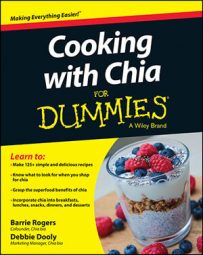All chia is not created equal. Chia seeds require very specific growing conditions for the seeds to become high in omega-3 fatty acids, protein, and other nutrients. Weather conditions, the amount of sunlight, and temperature are just a few of the factors at play to ensure that the seeds harvested are highly nutritious.
Then there are the harvesting and cleaning techniques used. These techniques differ immensely from one chia producer to another, and they contribute to the quality of the resulting chia seeds.
The difference in appearance between good-quality chia and inferior chia is very slight, unless you know what you’re looking for. Because of the difference in nutritional value between good chia and inferior chia, it pays to know what to look for when you shop.
High-quality chia seeds are approximately 2 mm long and are either black or white in color. They can be a dark gray color or a creamy white color, but they’re never brown.
If you see chia that has lots of brown seeds in it, don’t buy it. Brown seeds are immature — they don’t have the high levels of omega-3 fatty acids, protein, or antioxidants expected from chia.
In general, good-quality chia contains mostly black seeds with a few white seeds speckled amongst them. However, there are all white seeds available, which are high quality and just as nutritious as the black ones. As long as the chia you buy has no brown or very few brown seeds, you can be sure that you’re buying fully mature seeds that are full of the nutrients you expect.

